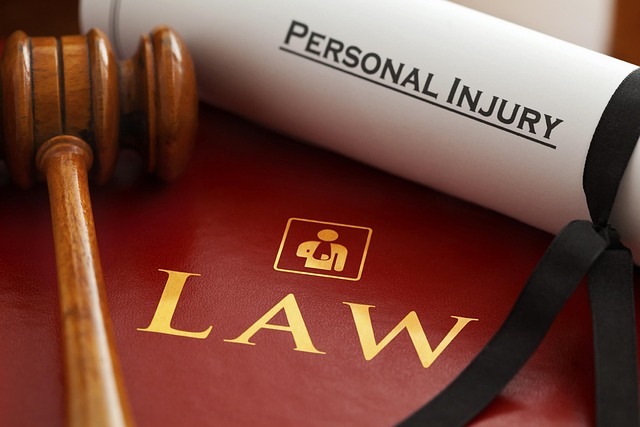The RF Securities Industry Regulation Framework emphasizes transparency and fairness, demanding rigorous monitoring of investigative processes. Regulatory bodies like the SEC require detailed financial records and communication logs as Evidence Needed for a Personal Injury Claim to combat violations. This framework protects investors through education and disclosure, while proper documentation, including medical records and financial documents, is crucial for successful personal injury claims, especially in complex cases involving white-collar crimes. Regulatory bodies set guidelines on acceptable evidence, collaborating with legal experts to interpret data, ensuring justice in securities industry-related personal injury cases. Effective navigation of these regulations hinges on thorough evidence collection and preservation, including digital storage and forensic techniques.
The RF securities industry is heavily regulated to protect investors and ensure fair markets. This article delves into the intricate framework governing this sector, with a focus on understanding the regulatory landscape. We explore essential components like documentation requirements for personal injury claims, highlighting the need for comprehensive records. Furthermore, it examines the role of regulatory bodies in determining evidence admissibility, providing insights into best practices for securing compelling evidence. By understanding these aspects, stakeholders can navigate the complex environment and ensure compliance.
- Understanding RF Securities Industry Regulation Framework
- Documentation Requirements for Personal Injury Claims
- Role of Regulatory Bodies in Evidence Admissibility
- Best Practices for Securing Compelling Evidence
Understanding RF Securities Industry Regulation Framework

The RF Securities Industry Regulation Framework is a complex web designed to ensure fairness, transparency, and integrity in financial markets. At its core, this framework mandates robust monitoring and oversight of all stages of the investigative and enforcement process. Regulatory bodies, like the SEC (Securities and Exchange Commission), require extensive evidence needed for a personal injury claim within this context, including detailed financial records, trading patterns, and communication logs. This evidence plays a crucial role in uncovering potential violations and holding wrongdoers accountable across the country.
Beyond enforcement, the framework promotes investor protection through educational initiatives and clear disclosure requirements. Understanding these regulations is essential for both market participants and investors, as it enables them to navigate financial markets with greater confidence. The process involves careful consideration of all available information, from initial complaints to jury trials, ensuring that justice prevails in complex securities litigation cases.
Documentation Requirements for Personal Injury Claims

When pursuing a personal injury claim, proper documentation is paramount. The evidence needed for a personal injury claim includes medical records detailing injuries, treatment, and recovery; police reports documenting the incident; and witness statements providing accounts of what transpired. These documents are crucial in building a strong case and demonstrating liability on the part of the responsible party.
In addition to these core requirements, white collar and economic crimes cases often require specialized documentation. This may include financial records, emails, or other digital evidence that can prove intent or damages across the country. Whether dealing with corporate or individual clients, ensuring all relevant documents are meticulously collected and organized is essential for a successful personal injury claim.
Role of Regulatory Bodies in Evidence Admissibility

Regulatory bodies play a pivotal role in ensuring fairness and accuracy within the securities industry, especially when it comes to evidence admissibility in legal proceedings. These entities establish guidelines and standards that dictate what types of evidence are acceptable in court, particularly for complex cases like personal injury claims involving financial sectors. For instance, in the context of personal injury lawsuits where individuals seek compensation for losses incurred due to negligent or fraudulent securities transactions, regulatory bodies provide crucial frameworks.
These frameworks guide the process of gathering and presenting relevant evidence needed for a successful claim. Regulatory bodies often collaborate with legal experts to interpret complex financial data, ensuring that both plaintiffs and defendants have equal opportunities to present their cases effectively. This meticulous approach aids in winning challenging defense verdicts, as it enables a comprehensive evaluation of facts, thereby promoting justice for all parties involved, especially for his clients pursuing compensation for personal injuries resulting from securities industry mishaps.
Best Practices for Securing Compelling Evidence

When navigating the RF Securities Industry Regulation landscape, particularly with personal injury claims, establishing a robust evidence collection process is paramount. The first step in this strategy involves identifying and preserving all relevant documentation. This includes financial records, communication logs, and any other materials that can substantiate the claim, such as emails, text messages, or witness statements. A comprehensive understanding of the respective business practices and procedures is crucial for gathering solid evidence needed for a personal injury claim, especially in cases involving white collar defense or white collar and economic crimes.
Best practices for securing compelling evidence necessitate a systematic approach. This means promptly documenting any injuries or losses, maintaining detailed records of medical treatments and associated expenses, and preserving digital footprints through secure data storage methods. Additionally, ensuring the integrity of electronic evidence by employing chain-of-custody protocols and utilizing forensic techniques can significantly strengthen a claim’s validity.
The regulation of the RF securities industry is a complex yet essential framework, especially when considering personal injury claims. Understanding these regulations, as outlined in this article, is crucial for both legal professionals and individuals navigating evidence collection. From documentation requirements to the role of regulatory bodies, each aspect plays a vital part in ensuring fairness and admissibility. By adhering to best practices and gathering compelling evidence, those involved can effectively navigate the process, ultimately seeking justice within this structured landscape. Additionally, being aware of the necessary documentation for personal injury claims—a key SEO term—enables efficient case management and reinforces the integrity of the legal system.






